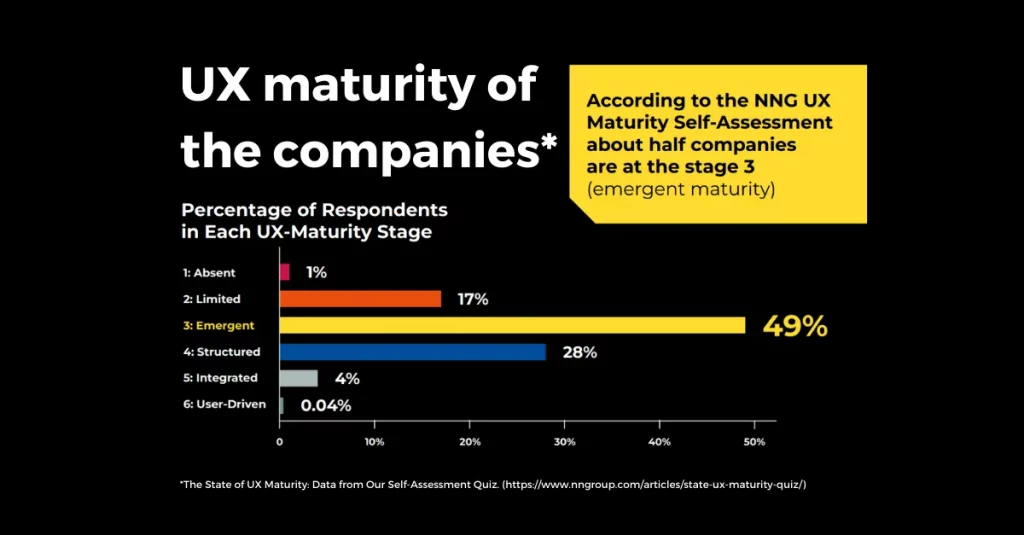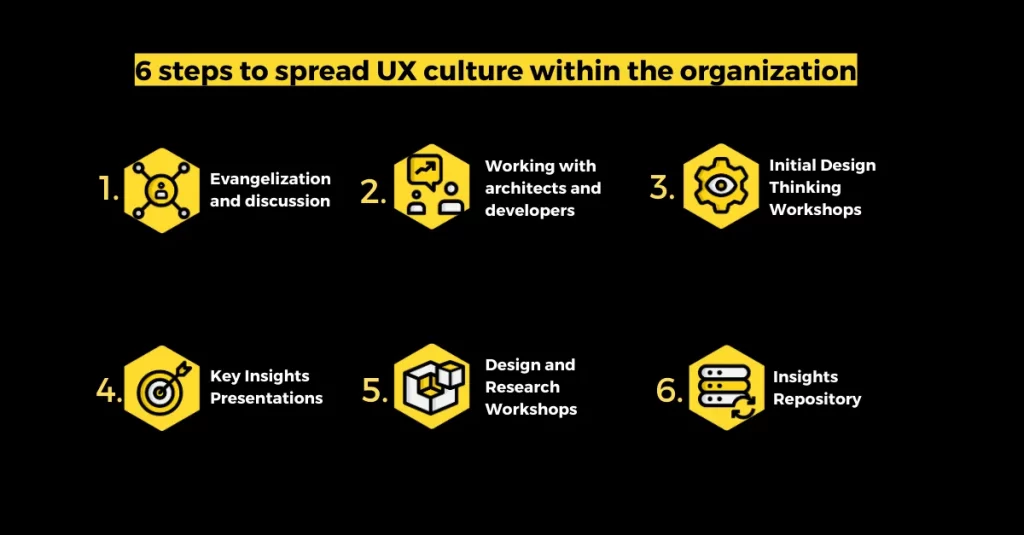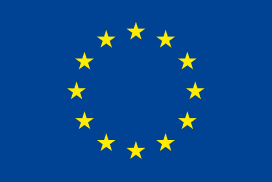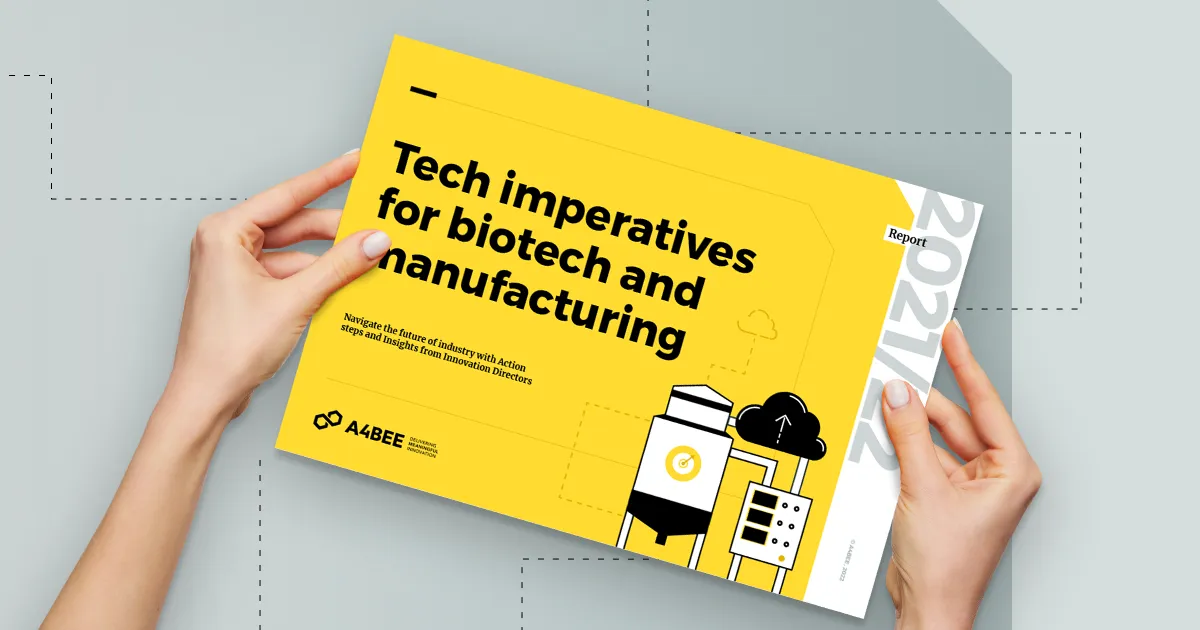5 min read

Intuitive and seamless products and processes could be a game changer. Especially in life science, where users work in complex environments, UX&UI support can accelerate innovation. Nowadays, to accomplish this, many companies are looking for UX&UI specialists with an awareness of life science processes and technology implementation. And when they already hire the right person, they face the challenge of spreading UX culture across the organization.
A few words about UX culture
UX culture is not only about design or research; it’s about building products and services tailored to the user. To achieve such a culture, people involved in the process must understand the UX role, from research and information architecture via UI and design to coding, documentation, and testing. Vital is also an attitude to think about the end-user every time something is being delivered to them.
If the UX culture at your company is at a high level, UX is also mature in terms of effectiveness and comprehension.
What is UX maturity, and how do we carry it out at A4BEE?
Real UX maturity is when all focus on users’ needs, trying to improve their experience and deliver real value. One of the A4BEE goals is to achieve such UX maturity that will actively bring all designers, researchers, engineers and developers to participate in delivering user experience. The second goal is to support other companies, sharing our expertise from the UX field so that they can apply them to common projects.
Why is focusing on UX significant?
According to the NNG UX Maturity Self-Assessment, about half of surveyed companies are in an emergent maturity stage. Namely, they already have designers and conduct some UX projects, but the process is not continuous. Nowadays, most organizations see the need for the implementation of UX culture. But how to do this in reality?

UX maturity of the companies, according to the data from the Self assesment quiz. Percentage of respondents in each maturity stage:
- Absent – 1%
- Limited – 17%
- Emergent – 49%
- Structured – 28%
- Integrated – 4%
- User-driven – 0.04%
6 steps to spread UX culture within the organization
- Evangelization and discussion
- Start with spreading the news about UX. Just talk to people in your organization. Remember, that it’s an ongoing process, because when a company grows, new people appear. You have to ensure that the majority of people have heard about UX.
- The key to making people curious about UX is a simple language. At this stage, the communication of UX should be as simple as possible. Remember, what is obvious to you, may not be obvious to them.
- Working with architects and developers
- The goal is to understand them, reach out to them, teach them and make them aware of UX.
- Talk about examples and benchmarks, so you can make your thoughts visible and ensure you have the same thing in mind.
- Articulate your design decisions, say why you have chosen this solution, and that you are aware of the pros and cons. They will understand your perspective and what has influenced your decision.
- Make a simple wireframe with ideas to explain whether it works. It will benefit the product, regardless of which solution will be used.
- Initial Design Thinking Workshops
- Try DT workshops — they should be prepared for all employees in the company. While creating exercises, think about achievable and accessible topics where no specific knowledge from the design field is needed.
- During workshops, present some simple problems. It’s an excellent opportunity for participants to learn by experience, since they engage in exercises and use design thinking methodology.
- Key Insights Presentations
- After every research you conduct, share the essential knowledge about the user, the market, the product itself, the context of use, etc.
- Show only those insights that your audience needs to know.
- The best way to spread knowledge is by setting a meeting and presenting the results to others. It can lead to open and interesting discussions.
- Design and Research Workshops
- The aim is to explain the UX concept to non-designers and non-researchers so that they understand the point of your job during the collaboration. At this stage, you should also help your mates to start thinking about end-users.
- Keep the workshops captivating and interactive. By taking part in the exercises, the participants can see, in simple examples, what the research and design are.
- Insights Repository
- To ensure a continuous process where the team takes care of the user needs, create an Insight Repository. It’s the one place where the whole organization can find research outcomes.
- Think about the information architecture and the tools you can use in creating the repository.
- Ask for feedback in your organization. Have you shown the most interesting insights to your colleagues? How do they use the repository? Does the architecture suit them?
- After answering these questions, iterate the process according to the user’s needs.

- Evangelization and discussion
- Working with architects and developers
- Initial design thinking; Workshops
- Key insights; presentations
- Design and research; Workshops
- Insights; Repository
Supporting UX culture
There are a lot of possibilities to engage people in the organization in taking care of the user’s needs. Sometimes the developers, engineers or your other teammates work even closer to the end user. That’s why it’s essential to know how to ask the right questions, get the information required to improve the product and collaborate with the UX team.
Building awareness at A4BEE lasted more than three years — now, we are a team of people engaged in providing products tailored to end-users. As you can see, striving for UX maturity is a long journey, but we can support you in all the steps to achieve it.
How can we do that? From the beginning, we have worked on developing internal and external products and providing consulting services for the biotech, pharma, and manufacturing industries. As a result, we have built a team of experts who understand this industry’s needs and specific challenges. We always strive to seek innovative and meaningful solutions based on solid data and real user needs. That’s why we share our knowledge and support life science companies in pursuing user-friendly, efficient, and profitable solutions.
The article is based on a speech presented by Iwona Ignaś during ‘UX/UI for Life Science Pistoia Alliance’, which was held in Cambridge, UK






